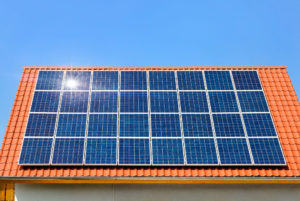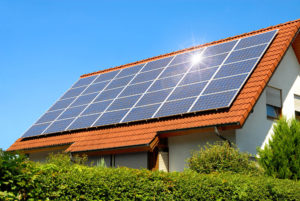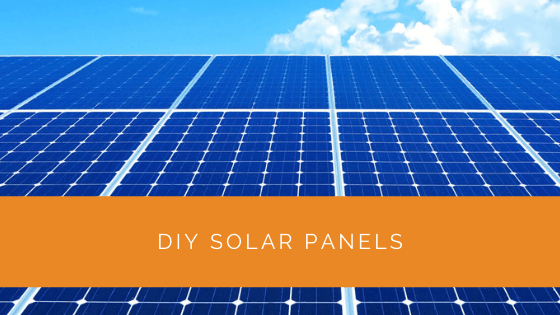This informative guide will explore the possibility of creating your solar panel system. With the rising interest in renewable energy and the incentives provided by the UK government, many people are considering harnessing the sun’s power to reduce their energy bills. However, the cost of professional installations can be quite substantial. That’s where DIY solar panels come into play.
Whether you’re a seasoned DIY enthusiast or just starting to explore the world of solar energy, we’ll provide the knowledge and steps necessary to build your solar panel system. From understanding the number of solar panels, you’ll need to selecting the right type of system and purchasing the essential components, we’ve got you covered. So, if you want to save on energy costs, reduce your carbon footprint, and embark on a rewarding solar journey, read on to discover how to build your DIY solar panel system.
Contents
- 1 Key Takeaways
- 2 Is It Possible to Build DIY Solar Panels?
- 3 How Do You Build A DIY Solar Panel System?
- 4 Is Building a DIY Solar Panel a Good Idea?
- 5 Case Study: Crafting a DIY Solar Panel System for Cost Savings
- 6 Expert Insights From Our Solar Panel Installers About DIY Solar Panels
- 7 Discover the Power of Solar with Solar Panels Network
- 8 Final Thoughts
Key Takeaways
- DIY solar panels are gaining popularity among homeowners in the UK as a way to combat rising electricity costs and gain energy independence.
- To build a DIY solar panel system, homeowners must determine the number of panels required, choose between grid-tie and off-grid systems, purchase necessary components like solar cells and wiring, and connect the system properly.
- Building DIY solar panels can be cost-effective if done correctly, but it requires expertise and careful planning. Ensuring that the components are MCS-certified to qualify for feed-in tariff payments is essential.
Is It Possible to Build DIY Solar Panels?
The UK government offers financing options and incentives to motivate people to install solar panels. However, even with these financing options, the cost of installing solar panels can be considerably high for some people.
People are turning to DIY solar panels to enjoy the solar system’s benefits and avoid the financial burden. You can build your solar system depending on your proficiency in the craft.
Some people may be able to build the complete system, while others may only do it partially. A certified installer can do the rest of the installation. However, the more you can complete yourself, the less you need to pay the installer.
How Do You Build A DIY Solar Panel System?
Building a DIY solar panel system requires several components that otherwise an installer would take care of. If you are confident about making your solar panel system, you will need all the right parts and follow the correct process.
Below is the process you must follow to build DIY solar panels.
Determine the Number of Solar Panels You Will Need
For this, you must measure the proportion of your house and the roof. The number will also depend upon the number of electrical applications you use in your home.
If you have a large household with many electrical applications, you must increase the number of solar panels. Ideally, most families in the UK use the 4 kW system, which is suitable for small to moderate households. However, you can go higher if you feel this is not the right system.

Choose the Type of Solar System
You will also need to decide the type of solar panel system you will use. There are two main types of solar panel systems– off-grid and grid-tie.
A grid-tie solar panel system is easy to install, and you can expand it based on the household’s needs. However, you can only install a grid-tie solar system if your home is connected to utility power. It is best to take the help of a licensed contractor or electrician if you want to install this system.
Another solar system type is off-grid for homeowners who want an independent energy source. You will require the help of a certified technician to install off-grid solar systems. Several government initiatives will help you install and purchase these solar panels.
Purchase All the Necessary Components
You will need to buy all the necessary components to build your system. These include solar cells, non-conductive materials like plastic glass or wood, wiring, and plexiglass.
- Solar Cells: You can choose from three types of solar cells. They are polycrystalline, monocrystalline, and thin-film solar cells. The solar cells will help convert solar energy into electricity.
- Non-conductive Materials: You will need materials like plastic, wood, or glass to attach to the solar cells. Most DIY solar panels use wood since it is easier to drill holes in the material for wiring.
- Wiring: The wiring of the solar panel system is the trickiest part. If you do not have any knowledge about wiring, it is recommended to use professional help. However, if you are confident about the metering and wiring system, you can DIY it.
- Plexiglass: After you wired the solar cells and attached the non-conductive materials, you must seal the whole system. Plexiglass is the best for this process since it can protect the solar cells from moisture, heat, and debris.
Purchase Additional Equipment
You will need a mounting rack to mount the whole solar system. This can be hard if you have a unique or shaded roof shape. However, households with a standard roof shape with direct sunlight exposure can use the standard roof mount. You can also use a ground mount if you have a large lawn or backyard.
Other additional equipment includes an inverter and a solar battery. These are not mandatory but would help you store the excess solar energy during off-peak.

Connect the System
The final step in the installation process is to connect the system to the racking equipment. You will need connectors or clamps for this step. It is better to get all the necessary components from the same distributor so that they fit with each other.
If you do not want to invest in the components separately, buy a solar panel kit. These kits contain all the necessary components, including the racking system.
Is Building a DIY Solar Panel a Good Idea?
Making a DIY solar panel will take a lot of time, and you will need some expertise. However, building an efficient solar panel is easily possible if you have all the necessary equipment and skillset.
You can also get the components at a lesser price, but you must check the distributor thoroughly. However, DIY solar panels sometimes cost more than a professional installation if you do not know the right places.
DIY solar panels will not be eligible for feed-in tariff payments immediately. The installation and components must be MCS (Microgeneration Certification Scheme) certified to receive feed-in tariff payments.
Case Study: Crafting a DIY Solar Panel System for Cost Savings
Background
At Solar Panels Network, we aim to empower homeowners with the knowledge and tools needed to harness solar energy efficiently. This case study examines a project where a homeowner successfully built a DIY solar panel system, achieving significant cost savings and energy independence.
Project Overview
The homeowner, an avid DIY enthusiast, wanted to reduce their electricity bills and environmental impact by installing solar panels. They opted for a DIY approach to minimise costs and gain a deeper understanding of solar technology. Our role was to provide guidance and support throughout the process, ensuring a safe and efficient installation.
Implementation
- Planning and Component Selection: The project began with a detailed assessment of the home’s energy needs and roof capacity. The homeowner chose a 3 kW system, sufficient for their energy consumption. They selected polycrystalline solar cells for their balance of efficiency and cost-effectiveness. Other components included an inverter, wiring, and mounting hardware, all sourced from reputable distributors.
- System Design: The homeowner opted for a grid-tie system to allow for easy integration with the local electricity grid. This decision enabled them to benefit from feed-in tariffs and export excess energy back to the grid. The system design also included a monitoring solution to track energy production and consumption in real time.
- Installation Process: The installation was carried out over several weekends, with the homeowner meticulously following safety guidelines and manufacturer instructions. The process involved mounting the panels, connecting the wiring, and integrating the system with the home’s electrical infrastructure. We provided remote consultation and support, especially for the more complex tasks like wiring and inverter setup.
- Challenges and Solutions: The homeowner faced challenges, such as sourcing compatible components and understanding the intricacies of wiring. To overcome these, we recommended reliable suppliers and provided detailed guidance on wiring techniques. Additionally, ensuring all components were MCS-certified was crucial to qualify for feed-in tariff payments.
Results
- Cost Savings: The DIY approach saved the homeowner approximately 40% on installation costs compared to professional services. The project cost around £4,500, significantly lower than the typical £7,500 for a similar professional installation.
- Energy Production: The system met the homeowner’s expectations, providing sufficient energy to cover about 60% of their annual electricity needs. The grid-tie setup allowed them to benefit from feed-in tariffs, further reducing their electricity expenses.
- Environmental Impact: By generating their own solar power, the homeowner reduced their carbon footprint by an estimated 1.2 tonnes of CO2 annually, contributing positively to environmental sustainability.
Summary
This case study illustrates the feasibility and benefits of DIY solar panel installations. With careful planning, the right components, and expert guidance, homeowners can achieve significant cost savings and energy independence. However, it is crucial to ensure all components are MCS-certified and to consult professionals for critical aspects of the installation to ensure safety and reliability. At Solar Panels Network, we continue to support and educate our clients on making informed decisions about their solar energy investments.
Expert Insights From Our Solar Panel Installers About DIY Solar Panels
Building your own solar panel system can be a rewarding project, but it’s important to understand the complexities involved. From selecting the right components to ensuring proper wiring, careful planning is crucial for a successful DIY installation.
Senior Solar Technician
DIY solar panels can significantly reduce installation costs, but they require a good understanding of electrical systems. For those less confident in their skills, it’s advisable to consult a professional for critical parts of the process, such as wiring and system integration.
Lead Installer
One of the key advantages of DIY solar panels is the flexibility to customise the system according to your specific energy needs. However, it’s essential to ensure all components are MCS-certified to qualify for feed-in tariffs and ensure safety and reliability.
Chief Installation Consultant
Discover the Power of Solar with Solar Panels Network
Are you navigating the world of solar installations? Look no further than Solar Panels Network, the UK’s trusted partner in harnessing the sun’s potential. Our dedication goes beyond just installations; we’re on a mission to transform how homeowners and businesses across the UK perceive and utilise energy. By choosing us, you’re reducing your carbon footprint and making a smart financial move that promises savings for years ahead. Contact us today and embark on your solar journey.
Final Thoughts
When building DIY solar panels, it is essential to understand the process beforehand. If you make a mistake, the whole system might not function. Contact a professional installer if you feel overwhelmed with the installation process.
Good-quality solar kits are also a feasible option for building your solar panel system. Here, you will get all the components in one place and not have to contact different distributors. You will also get solar panel components that are compatible with each other.
You might face many obstacles when building a DIY solar panel system. However, you can successfully build your own solar system with the right equipment and guidance. And, if you connect with the right distributors, your DIY solar panel’s cost will decrease significantly.
About the Author
Solar Panels Network stands at the forefront of solar energy solutions, driven by a team of seasoned solar engineers and energy consultants. With over decades of experience in delivering high-quality solar installations and maintenance, we are committed to promoting sustainable energy through customer-centric, tailored solutions. Our articles reflect this commitment, crafted collaboratively by experts to provide accurate, up-to-date insights into solar technology, ensuring our readers are well-informed and empowered in their solar energy decisions.

